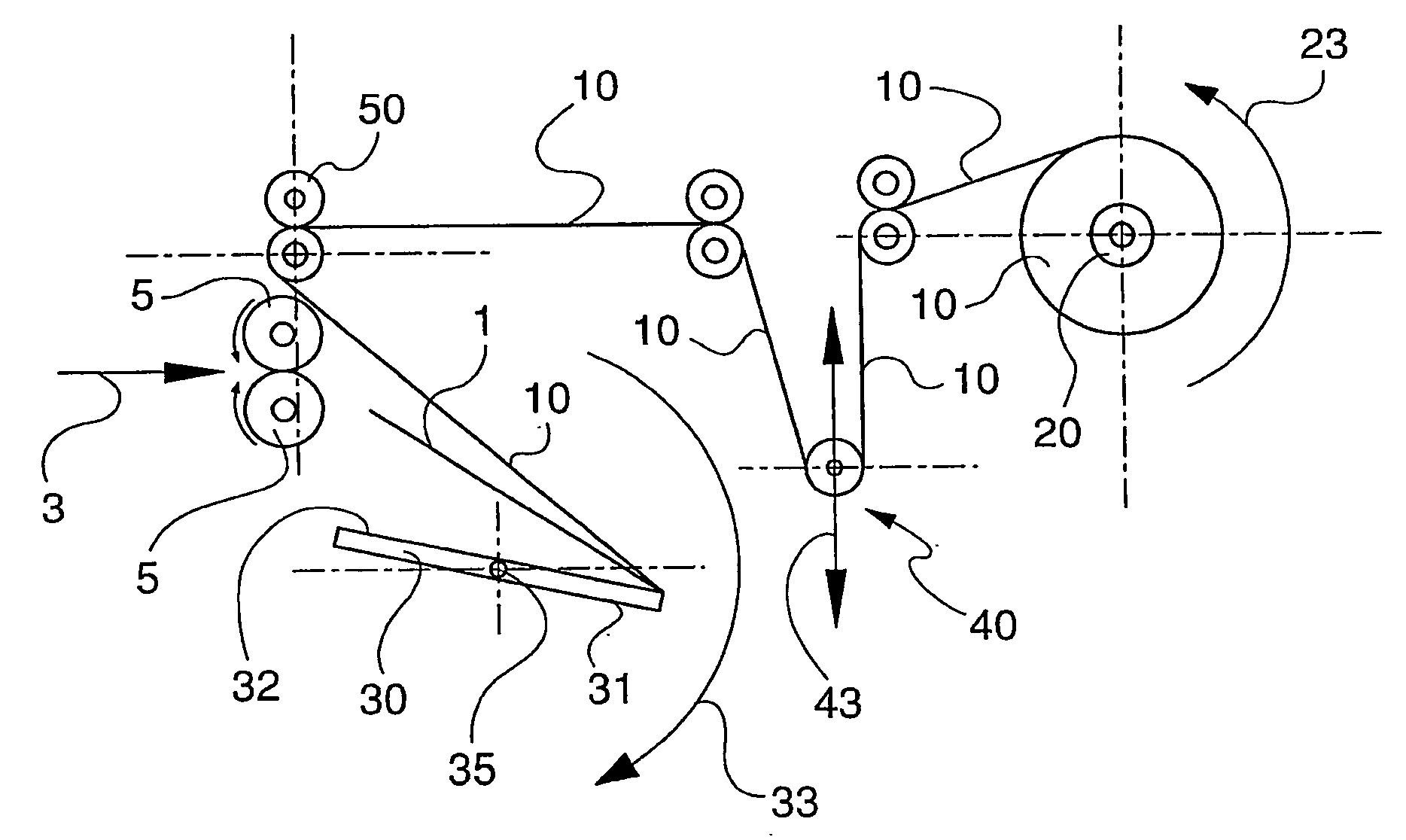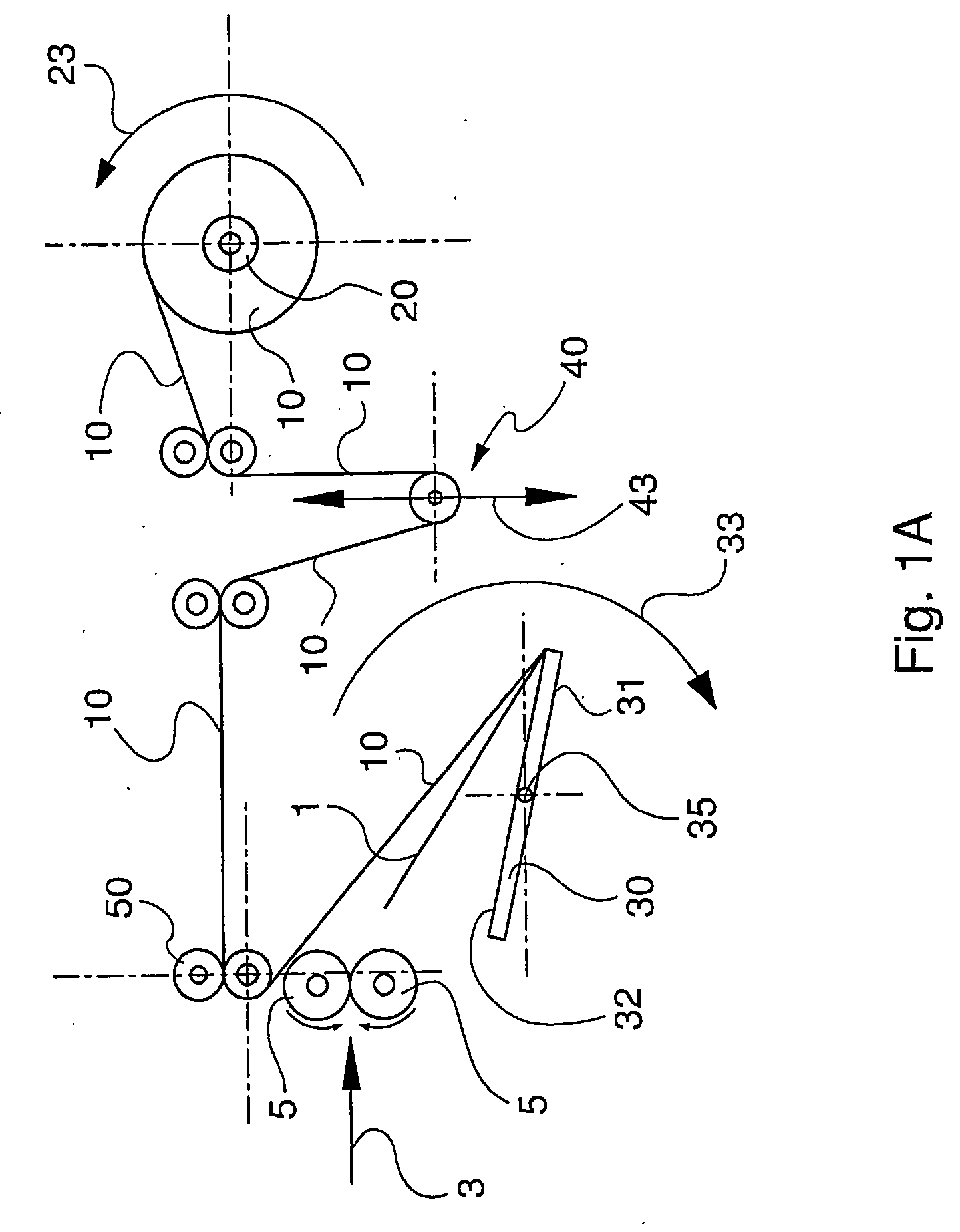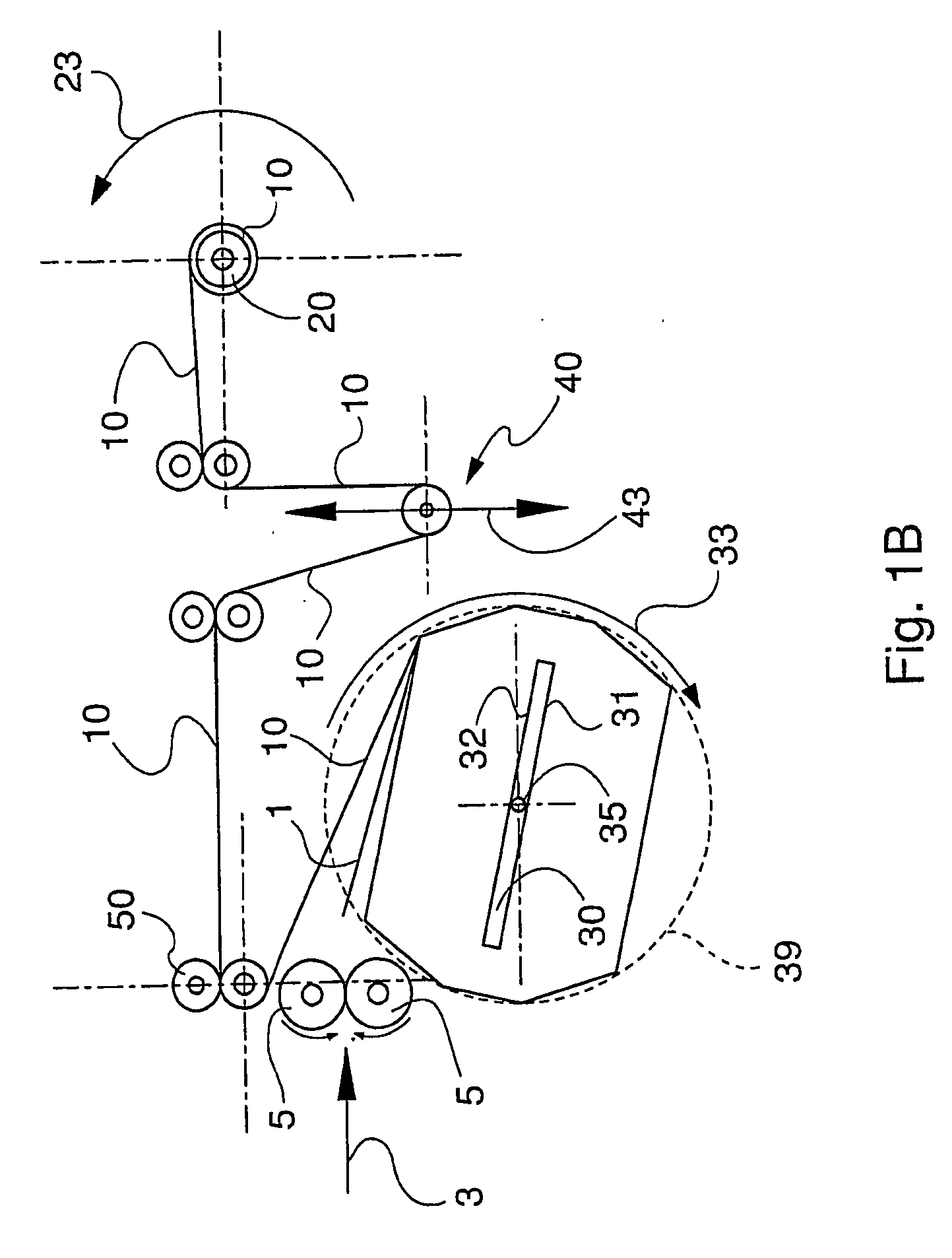However, these devices may at times cause two or more banknotes to be picked up at a time (the so-called “double errors” or “chain-effect errors”).
These machines do not enable the money possibly deposited by the customers to be used for subsequent dispensing operations.
The above known film-roller devices, albeit solving the problems linked to the use of singling modules that were adopted in the past, present, however, a certain number of drawbacks.
Furthermore, the banknotes remain wound for periods of time that are even relatively long before being dispensed and thus tend to assume a curvature which, in addition to being far from appreciated, is a cause of problems that arise at the moment of their dispensing.
The above fact causes a deterioration in the quality of the banknotes stored close to the roller, and thus said banknotes will present the biggest problems at the moment of dispensing.
This treatment constitutes a stress that wears out the paper of which the banknote is made, so abbreviating its life.
The curvature of the banknotes constitutes a big problem when a single-film device is used since the banknotes, in the dispensing step, tend to remain adherent to the roller itself, also as a result of a certain electrostatic charge that is caused when films made of plastic are used.
The use of films that are narrower than the banknote leads, however, to another drawback.
The banknote may then remain in a position set further back than it should be, with the risk that the next banknote will overlap or be superimposed thereon or, worse still, will get crumpled, so jamming the device completely.
However, it is highly unlikely that it will be necessary to use the same amount of film for each strip in order to wound a banknote, even though the two strips in question will be positioned on the same face of the banknote itself.
Staggering of this sort brings about a lack of homogeneity between the outer sides of the roller and its centre.
Other problems of known storage devices arise in the control of some variable parameters on which is it is necessary to intervene according to the conditions of winding and unwinding.
As the
machine proceeds to storage of the banknotes, the situation will undergo constant change to the
disadvantage of the motor that pulls the storage roller, in so far as the latter's
diameter increases rapidly as a result of the thickness of the two films and of the banknotes, whilst the
diameter of the two reels of film decreases only in proportion to one layer of film.
In fact, the films are hardly ever provided with a sufficient grip to guarantee conveyance of the banknote at the desired speed right into the storage roller.
Even a small deceleration of the banknote with respect to the film (i.e., slipping) could cause major drawbacks, such as, for instance, crumpling of a banknote or overlapping or
superimposition of a number of banknote.
However, in the dispensing stage, this technique is practically not implementable and it is hence necessary for the pulling axis to be set at such a distance as to enable extraction of the banknote from the film when the banknote is still partially pushed by the storage roller.
This need becomes a problem when the storage roller has been made to enable storage of a number of banknotes such that the difference between the initial
diameter of the roller (roller empty) and the final diameter (roller completely full of banknotes) is so large as to prevent the pulling axis from possibly being set in a
fixed position.
Consequently, the pulling axis would not be able to ensure the right thrust exerted on the first banknotes that are to be deposited within the roller itself, nor to ensure their complete extraction in the dispensing stage.
This drawback is even more felt in devices that envisage
insertion of the banknotes in the direction of their short side.
The duration of the
delay is generally in proportion to the amount contained in the safe s This frequently results in a problem for operators who, when they require a supply of money for their own cash-desks, have to wait quite a long time, thus creating poor service.
The limit of these machines is represented by the fact that, since it is not possible for said systems to have excessive dimensions for reasons of space and functionality, the possible partialization is always insufficient.
This has of course led to protests on the part of the purchasers, which in turn has over time created major problems for the companies themselves and a consequent lack of proper service.
The presence of the envelope has, however, created an enormous problem to currently existing devices for
automatic dispensing of said cards.
These machines are very widespread, but with the adoption of cards pre-inserted in envelopes they present many problems of operation since the envelope, in which there is frequently also inserted a small instruction leaflet (frequently folded a number of times), lacks rigidity and no longer has a homogeneous thickness; consequently, the action of the pusher and that of the output gauge no longer have the same degree of effectiveness.
Furthermore, in the case of other similar items which are generally not inserted in envelopes (e.g., cards for car parks), the introduction on the card of panels of the scratch-off type renders this technique even less reliable in so far as the
rubbing between one card and another in the step of extraction could remove in part the removable panel, with the consequent possibility of uncovering the underlying information.
So far no real solution to the above problem exists, so that such cards are frequently distributed using traditional vending machines of the type used for self-service sale of packets of cigarettes or the like.
One of the biggest drawbacks, in addition to the procedure and to the cost of boxing of each card, is due to the low capacity of these machines.
Escrow devices so far proposed are all more or less complicated and costly in so far as they must be adapted to, and inserted between, pieces of equipment that are frequently very different from one another according to the manufacturer, the quality, and the technologies used.
The fact that the banknotes parked may be one, or more than one, complicates the structure of the
escrow device, which must
handle correctly both an individual banknote and a wad of banknotes not properly ordered.
Finally, it is emphasized that these mechanisms can rarely
handle wads of more than 5 to 10 banknotes.
It may occur, in fact, that in public offices, in which a number of operators are authorized to fill in and personalize said documents (identity cards, passports, driving licences, and the like), non-personalized valid documents may get stolen.
Even though said documents are kept in special safety cabinets, once the cabinet has been opened, it is difficult and somewhat troublesome to check that all the operators who have access thereto take out only the number of documents required.
 Login to View More
Login to View More 


